Capital:
Tashkent
Currency
Som
Best time to visit:
from April to June
Vaccines
None
In a word:
Yol blosin (that your journey is trouble-free)
Essential experiences:
Get lost in the fairytale Registan of Samarkand; stroll through the timeless alleys of Buhara and Khiva


Our suggested itinerary (13 days) | |
two days: | Tashkent |
four days: | Samarcanda, Ravet |
three days: | Bukhara |
three days: | Khiva |
| one day: | Tashkent and flight to major Asian cities and beyond |
If one were to make a ranking of the most interesting cities in Central Asia, the podium would fall to three Uzbek cities: Samarkand, Bukhara and Khiva. These names bring to mind images of dervishes, caravans winding through the desert, picturesque mosques, extraordinary bazaars and ancient fortresses.
Tashkent is the main transport hub in Central Asia. Here there are areas with wide avenues in Soviet style crossed by taxi drivers, often illegal, "you only have to own a car and become a taxi driver", others with alley mazes where old people wearing long chapan (quilted coats), push carts loaded with nuts towards the bazaar.
Intriguing is the union between Islam and the Soviet imprint, characterized by a cosmopolitan population and an expanding culinary landscape.
The old city (in Uzbek "eski shahar", in Russian "stary gorod") starts from the parts of the Bazaar Chorsu. The alleys in beaten earth, on which low houses in mud bricks face, form a real labyrinth in which it is easy to get lost.
Chorsu Bazar is the largest agricultural market; surmounted by an immense green dome, it is an enchanting picture of urban life: here you can find everything that grows and is edible, large quantities of fragrant spices arranged in brightly colored piles, huge bags of wheat, whole sheds dedicated to sweets, dairy products or freshly baked bread from the circular walls of the ovens, endless rows of freshly slaughtered animals and fruit pyramids of all kinds.

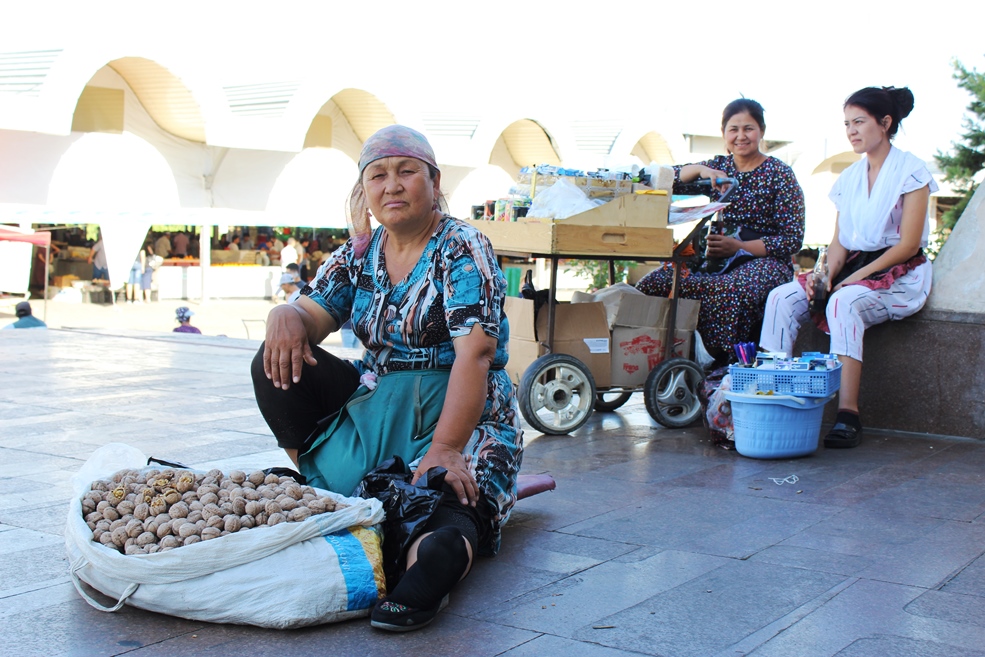
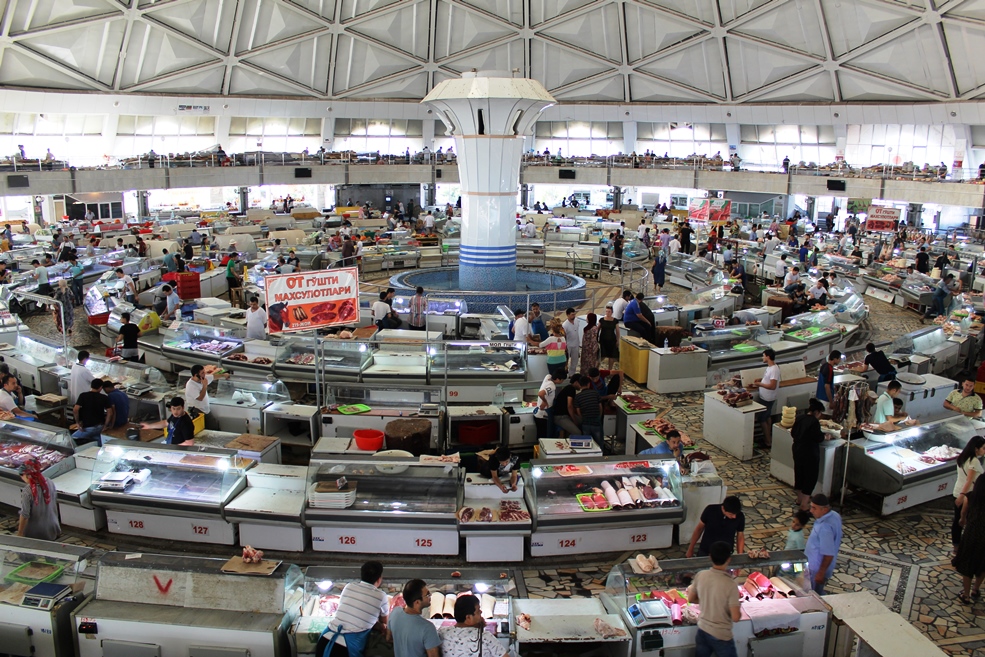
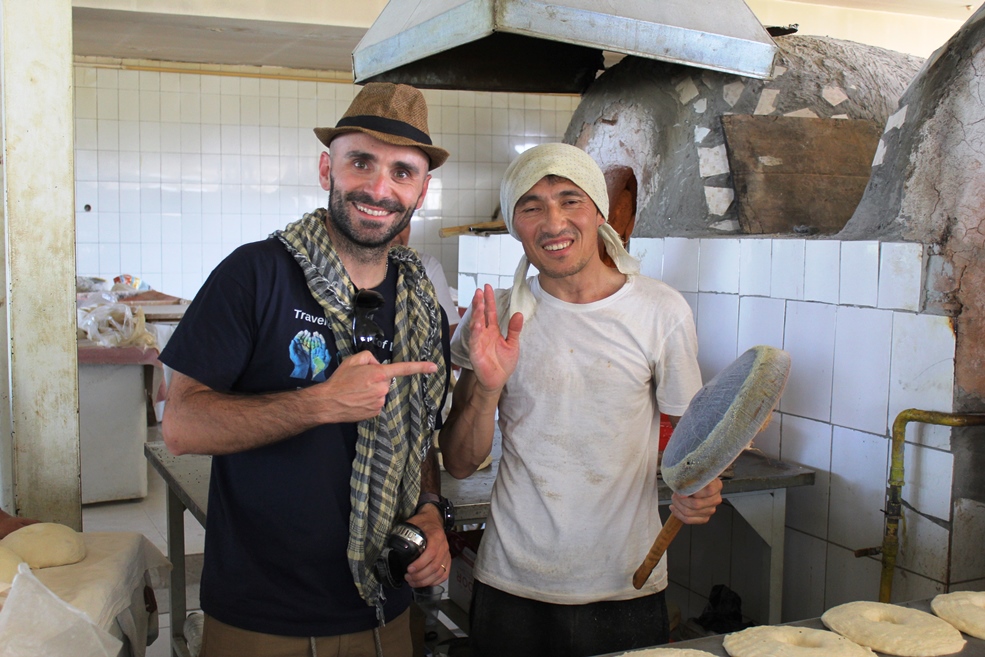

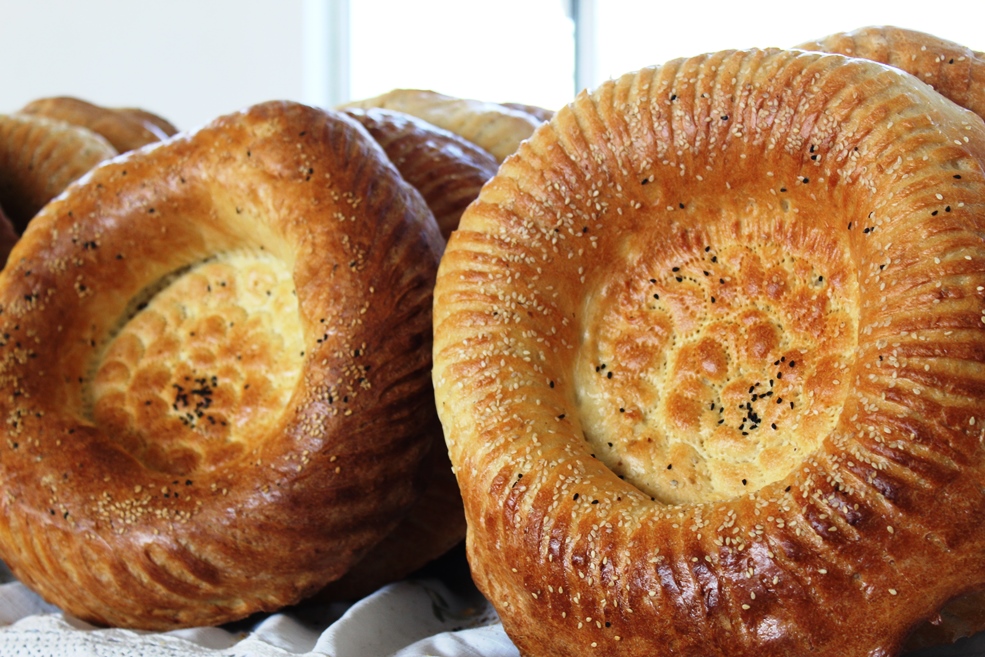








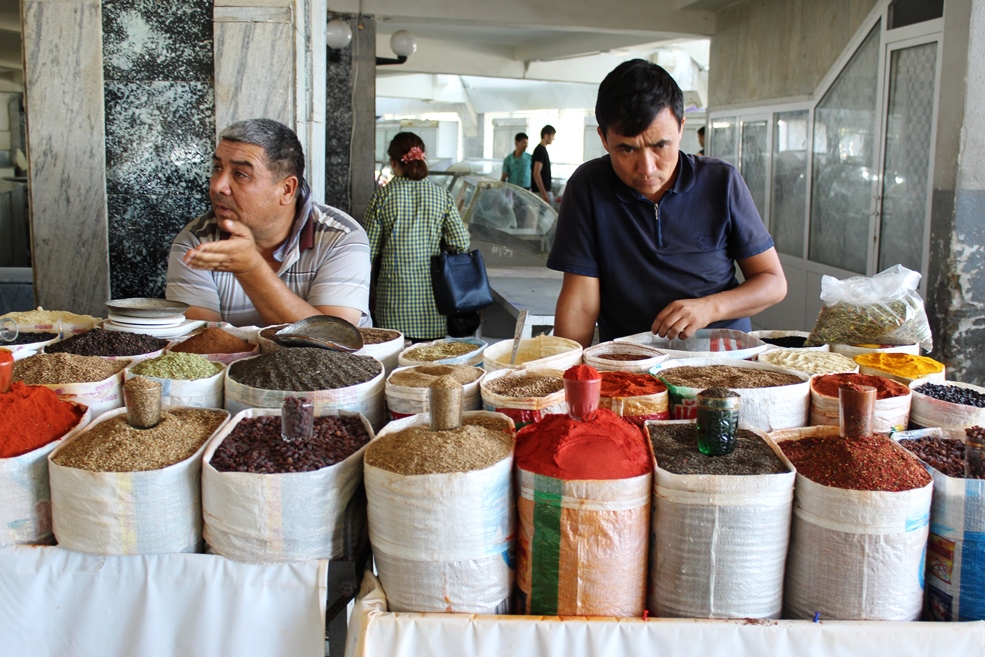








Not far away is the Mausoleum of Abu Kaffal Shoshi which contains the tomb of this great Islamic poet and stands next to what was once an important Barak Khan Medress.
A good plate of shashlyk (skewers of meat of mutton) is the right first taste of this magnificent new land!



"For the longing to know what should not be known. We walk along the golden road that leads to Samarkand! "
James Elroy Flecker
No name brings to mind the "silk road" more than that of Samarkand, it has almost the same historical resonance as Atlantis or Ebla.
The sublime and immense monuments built by Tamerlano, the multicolored bazaar and the long and rich history of the city really make the atmosphere almost magical.
All I heard about Samarkand is true, except that it is more beautiful than I imagined
Alexander the Great 329 BC
Focal point of the Silk Road, the city stood at the crossroads of the roads that led to China, India and Persia and brought merchants and artisans here.
Turks, Arabs, Mongols, Shahs ruled this city before Genghis Khan swept it away in 1220.
It could have been the end of his story but, a century and a half later, Tamerlane decided to make Samarkand his capital, bringing it back to its former glory.









We immerse ourselves completely in everyday city life thanks to the professionalism of Zamin Travel, a local tour operator with whom we have collaborated in this Uzbek adventure.
Bibi-Khanym Mosque. Imposing mosque completed shortly before the death of tamerlano, it was certainly the jewel of his empire as well as being one of the largest in the Islamic world.
According to legend, Bibi-Khanym, Tamerlano's Chinese wife, ordered its construction to surprise him while he was absent. The architect fell in love with her and refused to finish the job unless she kissed him. The kiss left a mark and, when he saw it, Tamerlano had the architect executed and ordered that, in the future, all women should wear the veil so as not to be a temptation for other men.
In the courtyard there is a huge marble lectern for the Koran. According to local tradition: if a woman walks on all fours under the lectern, she will soon have a child.



Not far away, along the tidy and touristy Tashkent Road, stands the famous Registan.
This emblematic complex of majestic and imposing medresses, a profusion of majolica and blue mosaics is one of the most extraordinary places in all of Central Asia.
The Registan (in Tajik: sandy place) was the commercial center of medieval Samarkand. The three majestic buildings that compose it are the oldest surviving medresses to the present day, the previous ones were razed to the ground by Genghis Khan.
The medressa of Ulughbek is the oldest and placed before that of Sher Dor (lion), it is in fact decorated with roaring felines. Between the two medresses rises that of Tilla-Kari (gold-clad), with a beautiful garden and a mosque rich in elaborate gold decorations that testify to the wealth of Samarkand.











Mausoleum of Gur-e-Amir. Here rest Tamerlano, two sons and two grandchildren. As in other Muslim mausoleums, the tombstones have a purely indicative function: the actual crypts are found in an underlying chamber.
At the center is the tombstone of Tamerlane, once formed from a single block of dark green jade. In the mid-1700s, the Shah Nadir took her to Persia where, accidentally, she broke in two: from that moment the misfortunes began for poor Nadir. At the suggestion of his religious advisers, he sent the tombstone back to Samarkand and, of course, his misfortunes ended magically!
Shah-i-Zinda. Perhaps the most evocative and beloved place in Samarkand. A quiet avenue of mausoleums adorned with some of the most beautiful glazed tile works in the Muslim world. The name, which means: "tomb of the living king", refers to the inner sanctuary which also houses the tomb of Qusam Ibn-Abbas, a cousin of the prophet Muhammad who, it seems, brought Islam there.
In the evening we return to the Bibi-Khanym mosque to enjoy one of the most romantic sunsets of the whole trip! Please note: entrance tickets for the various cultural sites are valid for the whole day, therefore we advise you to visit them during the day and to return, in the evening, calmly, for the evocative photos of the sunset in those that most impressed you.
Today we are guests of Mardon and Akbar in their small village on the border with Tajikistan. I find that living this kind of experience is the best way to fully understand the cultural aspects of the people.







In fact, here, we admire a picture of Uzbek rural life where the nuclei, very united, according to the principle of respect and family, revolve around the figure of the head of the family who looks after and manages all his loved ones; if this figure is missing, the older son takes over and loads this enormous burden on his shoulders.
Life is very simple here, onions, potatoes and wheat are cultivated and cows are looked after…






To immerse ourselves even more in this Uzbek reality, in the evening we are invited to a wedding!
About 500 guests, a large two-story room, huge circular tables: men on one side and women on another.
Neo-melodic local singers alternate at the microphone and dance and have fun while celebrating the newlyweds!
Bukhara, the most sacred city in Central Asia, has millennial buildings and a historic center that is still inhabited and probably hasn't changed much over time.
There are numerous medresses, minarets, a massive royal fortress and the remains of an old bazaar.
Until a century ago, the city's water supply was ensured by a network of canals and around 200 stone basins where people gathered to gossip, drink and wash. As the water was not changed often, Bukhara became famous for plagues and in the 19th century, the average age was 32 years.
Today it is an oasis in the middle of the Kyzylkum desert that completely surrounds it; the heart of the Shahristan (old city) consists of the basin and the Lyabi-Hauz square, the Kalon minaret and the "Ark" citadel.
We stay at the "Hovli Poyon", a very characteristic and central ancient residence of the 19th century.
Lyabi-Hauz is the main square, shaded by ancient mulberry trees where you can still meet old Uzbeks sipping tea or chini on the chessboards to play.
While the "insane sage" Hoja Nasruddin, a myth of Sufi tales, looks at you slyly, get lost in this square admiring the medressa of Nadir Divanbegi, a former caravanserai turned into a medressa ... Bukhara is truly an open-air museum!
Turn between covered bazaars and topped by high domes, designed so to convey the fresh air inside; each bazaar was specialized in one sector: there was that of money changers, that of hat makers, that of jewelers, etc. now only souvenirs and food!


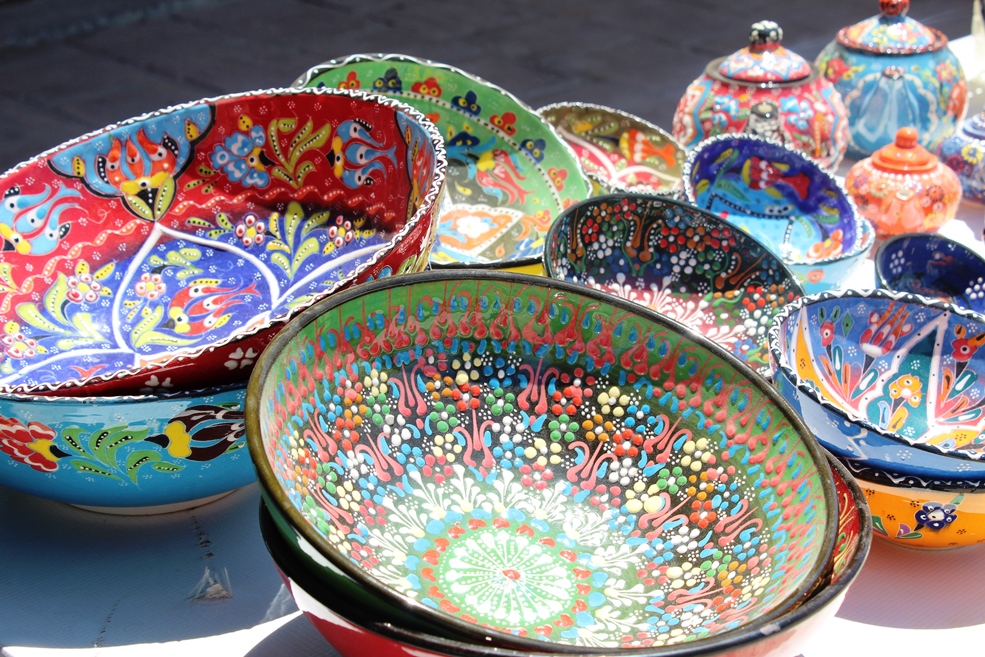








Very impressive is the Kalon minaret, for many years it was the tallest building in Central Asia, even Genghis Khan was so impressed that he ordered to spare it.
Here stands the Ark, the so-called "Cittadella", a royal city within the city. It was destroyed by bombing by the Red Army at the beginning of the 20th century but, despite everything, it retains its ancient charm thanks to the many rooms, now turned into museums.
It is incredible to wander around the streets of this ancient city, every encounter is a discovery: the beautiful Bolo-Hauz mosque with very high wooden columns; the Mausoleum of Ismail Samani, all in terracotta; the Mausoleum Chashma Ayub, famous for the source of Jacob ...
Our advice is to lose yourself, aimlessly, letting yourself be swallowed up by the magical charm of Bukhara where you will be able to daydream!



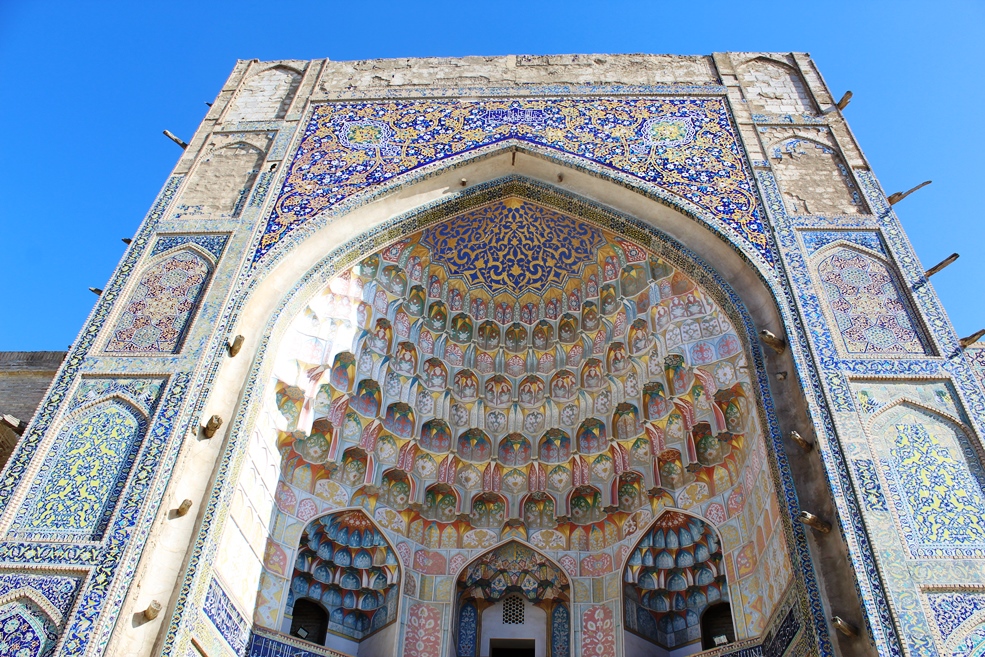




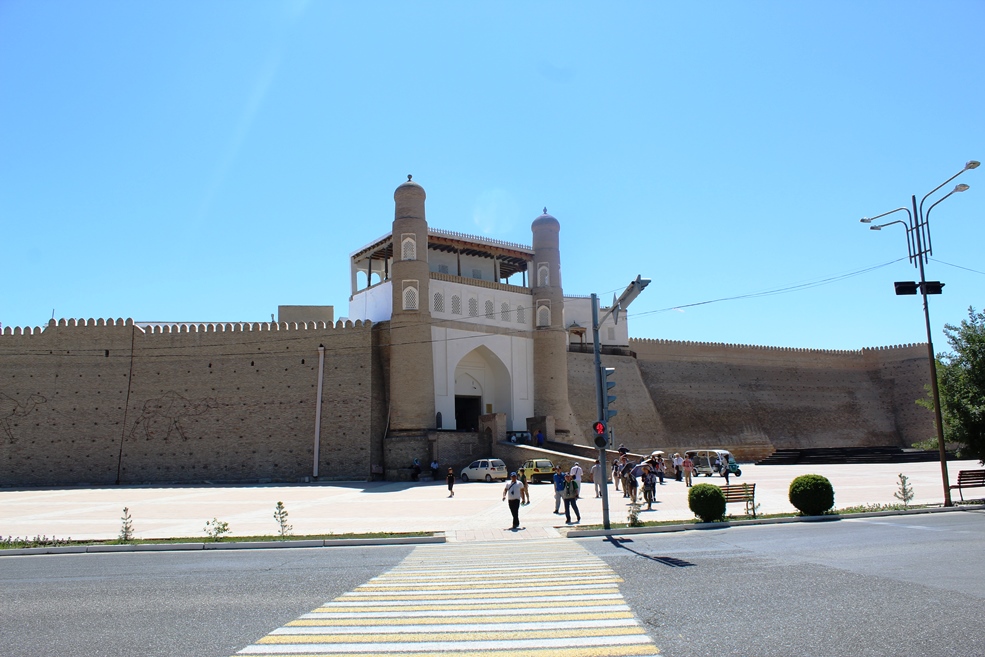

Not far from Bukhara rises the summer palace of the Emir. Here we have an idea of the rather kitsch lifestyle of the last emir: Alim Khan "Sitorai Mohi Hosa" (garden of the stars and the moon).
A 50-watt Russian generator provided the first electricity the emirate had ever seen.
In front of the harem there is a pool where the 40 women of the plump emir bathed, legend has it that in the evening he threw an apple to the chosen one for the night!
In the village of Kasri Orifon is one of the most important sanctuaries of Sufism as well as the birthplace and tomb of Bakhautdin Naqshbandi, founder of the most influential of the many ancient Sufi orders of Central Asia.
We cross the dreaded Kyzylkum desert with an outdoor temperature of 43 ° to reach another jewel of Central Asia: Khiva.
The journey is long and hard enough but the arrival repays us for all our efforts!
The historic center is so well preserved that it looks like a set of caliphs or a thousand and one nights.
Crossing the mud walls that enclose the Ichon-Qala (old city) in all its splendor is like taking a step back in time.
We soon let ourselves be swallowed up by the magic of Khiva just in the evening when this small city gives its best when the profiles of the inclined columns and the medresses illuminated by the moon, with the swallows around, the winding alleys give off all their magic.












There are 4 entrances, two for tourists (for a fee) and two for locals (free), if you can spot them you can enter this new dimension for free!
Uzbekistan has given us a lot in these weeks of travel, once again we remain mute by the simplicity and genuineness of the people, dazzled by the beauty of its mosques and medresses and by the millenary culture of this great nation of Central Asia!
Error: No feed found.
Please go to the Instagram Feed settings page to create a feed.
14 Responses
Mi e piaciuto molto. Vorrei andare la primavera prossima. Ti posso chiedere come hai organizzato il viaggio? Grazie. Mirella Masellli
Ciao Mirella, grazie mille. Il viaggio è davvero interessante e noi l’abbiamo organizzato da soli con il supporto di un tour operator locale Zamin Travel, (troverai il link all’interno dell’articolo) e ci siamo trovati davvero benissimo. Lo consigliamo vivamente. Se hai bisogno di info contattaci pure.
Ciao,
stiamo provando ad organizzare un viaggio in Uzbekistan per la prossima estate, siamo una piccola famiglia composta da Elisa (mamma) Lorenzo (papà) e Beatrice (che avrà 3 anni al momento del viaggio).
Noi siamo legati al mese di agosto per le ferie, abbiamo alcuni dubbi per l’organizzazione del viaggio:
– leggendo il vs diario di viaggio abbiamo notato che vi siete appoggiati ad un tour locale è necessario secondo la vs esperienza oppure è facoltativo?
– le temperature ad agosto saranno insopportabili secondo voi oppure comunque gestibili con alcuni accorgimenti?
– con il cibo avete avuto problemi oppure riuscivate ad avere una alimentazione variegata? Consigliate di fare il vaccino per le Epatite A?
– per la sanità avete notato qualcosa di rilevante da segnalare? Faremo comunque un’assicurazione medica ma vorremmo cpaire meglio come è gestito il paese dal punto della sanità.
Scusate le tante domande ma su questo paese si trovano poche informazioni e pochi diari di viaggio di famiglie italiane che ci vanno e quindi vorremmo capire meglio.
Thanks
Ciao
Elisa, Lorenzo e Beatrice
Ciao ragazzi,
grazie per le vostre domande perche’ potrebbero essere di aiuto anche ad altri che si apprestano a fare un viaggio del genere. Veniamo al dunque:
1. Questa volta abbiamo deciso di appoggiarci ad un tour operator locale (che abbiamo selezionato molto attentamente e che, ora, possiamo anche consigliare per la professionalità dimostrata) perchè viaggiando con una bimba, che li’ ha compiuto 3 anni, è mille volte più facile e pratico. Poi se badate a nome nostro vi tratteranno benissimo.
2. A differenza di quanto si possa crdere, il mese più calmo dell’anno è luglio quindi a luglio farà abbastanza caldo ma sopportabile. Soliti consigli, in luoghi come Khiva o Bukhara evitare le ore centrali per le visite ed il faticoso trasferimento da Bukhara a Khiva, che attraversa il deserto (su asfalto) è comodo avere un tour operator che vi renda il passaggio meno complicato. ps: ci tengo a precisare che non siamo i classici tipi da alberghi fighi e comodità!
3. nessun problema assolutamente con il cibo, anzi, tra plov e shashlyk non avrete alcuna preoccupazione, ne’ per voi e nè per la piccola. noi non abbiamo fatto nessun vaccino per la nostra piccola oltre gli standard obbligatori in Italia
4. Per la sanità, consigliamo solo di fare una buona assicurazione viaggio e nel caso, al momento giusto, ve ne consigliamo una buona sia in termini di copertura che di prezzo
Spero di essere stato esaustivo ma contattaci qui per qualunque altra info o dubbio
.Sarà che Samarcanda rimane un sogno che porto dentro fin da bambina… sarà che amiamo viaggiare e conoscere la diversità…Sarà che abbiamo una bambina poco più grande della vostra… Sarà che anche noi, nel nostro piccolo, cerchiamo di farle conoscere il mondo… Sarà che vi seguo da un pò ed ogni volta che vedo i vostri post e racconti di viaggio, mi innamoro di voi e del vostro coraggio nell’affrontare con Nora tutte queste meravigliose avventure!!
Sarà che scatta in me quel pizzico di sana invidia che mi spinge a cominciare a pensare ad organizzare un prossimo viaggio…
GRAZIE!! Siete proprio una meraviglia!!✈
Grazie di cuore. A volte bisogna osare e ti rendi conto che le cose sono più facili da realizzare di quanto si possa immaginare
Ciao! Stiamo pensando all’uzbekistan per estate 2020…con 3 bimbi under 8!! Mi chiedevo se oltre alle città c’è anche natura o paesaggi da vedere e percorrere.. tipo il deserto..
Ciao cara Olivia, grazie per il tuo commento; come avrai potuto capire dal nostro reportage: l’Uzbekistan è una Nazione estremamente interessante dal punto di vista storico, architettonico e religioso. Noi ci siamo concentrati di piu’ proprio su questi fattori. La natura è più viva di sicuro in nazioni confinanti quali il Tajikistan o Kirghizstan, tanto per citarne qualcuna anche se Khiva è una città nel deserto ed il transfer da Bukhara a Khiva vi farà attraversare il deserto del Kyzylkum! Buon viaggio. Se avete altre domande contattateci
Que lindo!!!!, que Dios los proteja en todo momento, guie sus pasos y gocen de todo la maravilla que encuentren. Cuiden mucho a la nenita. miles de besitos para ella, suerte.
muchissima gracias
La educación de su hija sacrificada por la aventura de sus padres, los niños tienen el derecho de ir a la escuela, interactuar otros niños porfavor ese es opinión…
Dear Elber, you are right but:
1. you are talking about a 4 years old baby
2. there is not a better school than the world 😉
3. i respect your point of view all the same
Ciao, secondo voi è un viaggio fattibile con un bambina di poco più di 1 anno? Grazie
Ciao Matteo, assolutamente si’. E’ un Paese molto tranquillo, ben organizzato ed interessante. Non avrai problemi